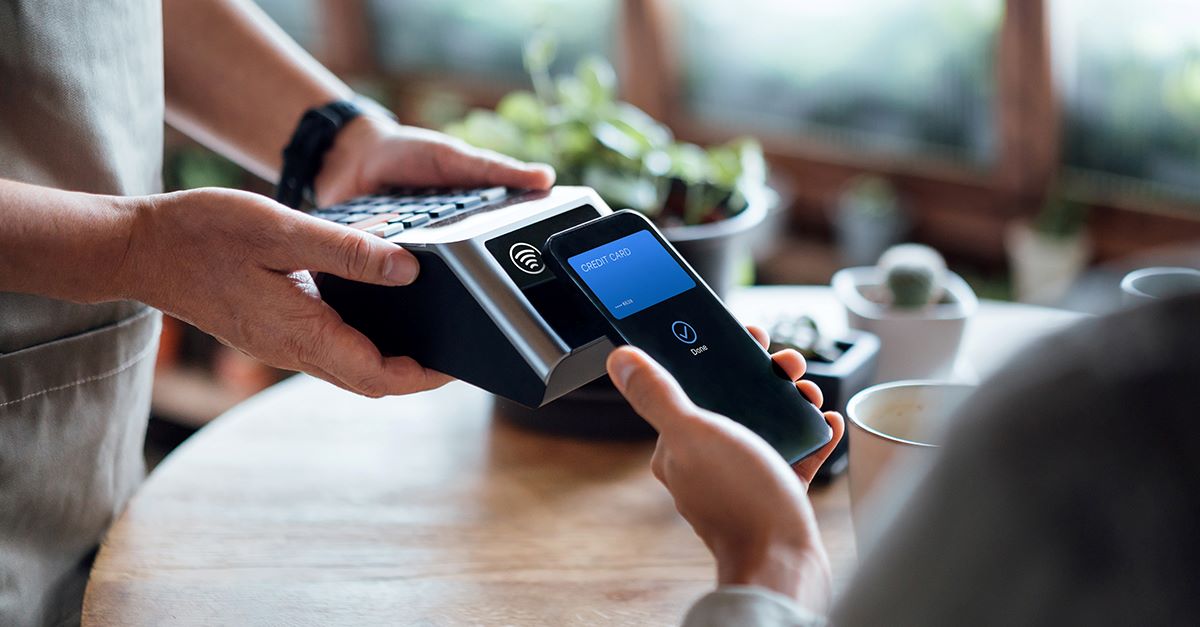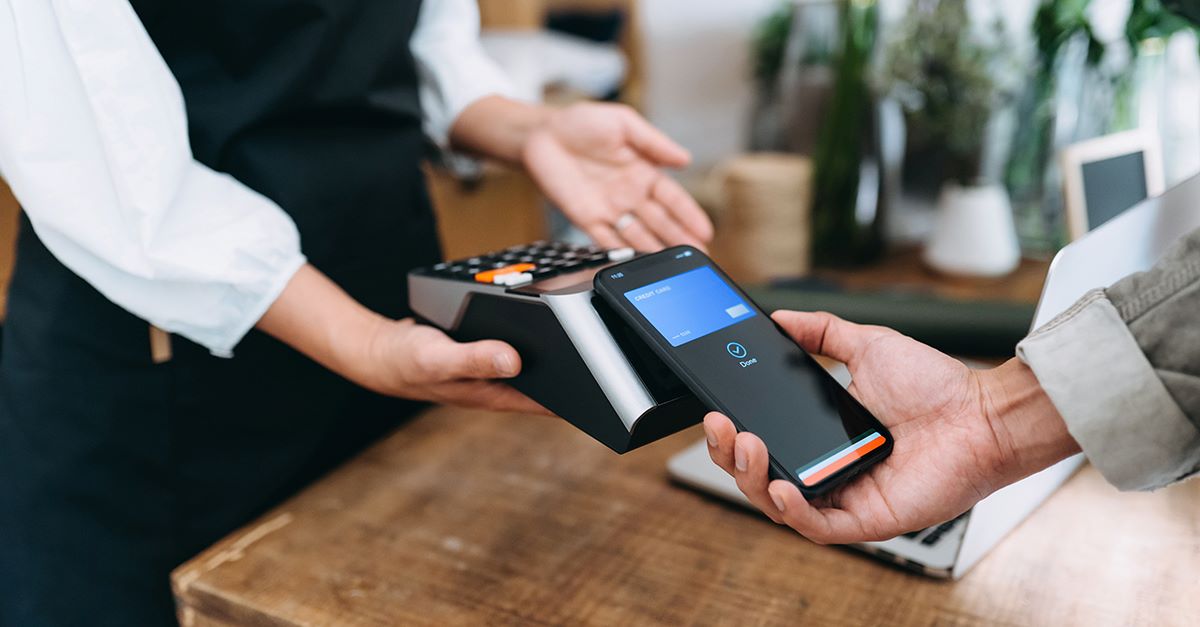By Lucia Sprungle, Director – ChoicePay®, at Huntington Commercial Bank
Key takeaways
- Consumer preferences are shifting toward digital payment methods that offer enhanced convenience, flexibility, and access to funds.
- The digital wallet adoption rate is on the rise, in some cases surpassing traditional payment methods for purchases, bill pay, and reimbursements.
- Healthcare, higher education, and retail sectors are seeing numerous use cases for everything from digital payments for patient reimbursements to tuition payments, consumer transactions, and more.
- With cyber and fraud threats on the rise, the security offered by digital payments is a significant benefit.
Consumers are no longer just asking for digital payment options – they’re expecting them. This demand has serious implications on revenue, with one study finding 51% of people surveyed would stop shopping with a merchant that doesn’t accept digital wallet payments†. Businesses not keeping pace risk falling behind as digital wallets, contactless payments, and other emerging technologies redefine how transactions are completed.
While convenience, flexibility, and security are driving consumer preferences, other use cases have emerged as organizations rely on digital payments to reduce costs and streamline cumbersome processes.
This first article in our four-part series on the digital payment transformation explores the underlying trends, the role of emerging technologies, and industry-specific use cases that illustrate the necessity of digital payment adoption.
Why digital payments are on the rise with consumers
Digital payments are experiencing a significant rise among customers, driven by a combination of convenience, security, and evolving consumer preferences. As technology advances, more people are embracing mobile wallets, contactless payments, and online banking as their preferred methods for transactions. Consumers appreciate the ability to make transactions quickly and easily from their smartphones or computers, eliminating the need for cash or physical cards. The shift is particularly evident in the wake of the COVID-19 pandemic. A 2023 Federal Reserve study found 74% of surveyed consumers had used an instant payment, digital wallet, same-day ACH, or other fast payment service in the past 12 months, and 57% expected to use them more going forward‡.
Another important aspect of the rise of digital payments is enhanced security. Modern payment systems incorporate advanced encryption and biometric authentication, providing consumers with a sense of safety that traditional payments may lack. This is especially important as concerns over identity theft and fraud continue to grow.
Several other factors driving the preference toward non-traditional payment methods are flexibility and access to funds. Digital wallets allow users to access multiple accounts, switch between payment sources seamlessly, and make payments anytime, anywhere. This level of flexibility is unmatched by traditional payment methods. Easy access of funds is especially important to consumers without a checking account or those who prefer not to use one. Digitally held funds can be accessed more easily, which is beneficial for underbanked or unbanked populations. 47.5% of unbanked U.S. households use online payment services like PayPal, Venmo, and Cash App for purchases, paying bills, and receiving income≠.
Why businesses are adopting digital payments
The payment industry is going through a remarkable evolution, and this is in correlation with the constant technological advancements around us. As mentioned above, these changes are mostly impacted and very much driven by consumer expectations. The flexibility to pay and be paid as customers prefer was the primary reason behind 39% of surveyed organizations using faster or instant payment typesⱢ.
For most organizations, however, efficient payment management is not just about processing transactions – it is about enhancing customer experience, while meeting compliance requirements, and optimizing financial operations. Streamlining payment processes with digital methods can reduce administrative burdens and costs associated with handling checks, clearing payments, and reconciling accounts. Receiving funds faster also improves cash flow and receivables processing time.
Digital payment trends: A growing momentum
The use of digital wallets and virtual cards – stored bank account, credit, debit, and loyalty card details in one place for use online – has exploded. More than half (53%) of surveyed consumers now use digital wallets more often than traditional payment methods, with 70% indicating they would make it their primary shopping methodⱠ. This growth underscores consumers’ rising comfort with contactless payments and the demand for speed and convenience.
There are clear favorites when it comes to consumers’ preferences in payment apps within this area: PayPal has become one of the most popular digital wallets, with 69% stating it’s their most used payment app††. For those accessing their digital wallets via smartphone or smartwatch, popular options include Google Wallet, Apple Pay, and Samsung Pay.
On the business side, digital wallets and mobile apps grew faster than ACH and debit card use in 2023, making them the second-most used payment method. Businesses’ adoption of digital wallets increased by 31% over the previous year‡‡, demonstrating the alignment of business practices with consumer preferences.
These trends combine to demonstrate the increasing digitization of the financial landscape. More and more people are relying on these payment platforms and apps to handle their finances, complete transactions, and hold funds. Organizations following suit could be better situated to adopt new methods as they emerge.
How consumers and businesses are using digital payments
When funds are instantly accessible and transferrable, there are seemingly endless use cases for digital payments. Both consumers and businesses rely on innovative new technologies to successfully handle finances and conduct transactions, and evolving regulatory and compliance requirements make them even more attractive.
Consumer digital payment use trends
Consumers are overwhelmingly using digital wallets and mobile payment apps to purchase goods and services both in-person and online. A global payments report found digital wallets were used in 30% of point-of-sale (POS) transactions in 2023, accounting for $13.9 trillion in global transaction value§§. Beyond purchases, consumers are also using digital payment methods to pay bills, pay friends and family, transfer money between accounts. There is also growing interest in other use cases, such as for rebates or returns, and earned wage access≠≠.
What this means for organizations is accepting digital wallets for every type of transaction, including refunds or paying off large purchases through a Buy Now Pay Later (BNPL) structure, could help build resiliency as finances become increasingly digital.
Business sector digital payment use trends
Retail: Based on the digital wallet POS transaction volume, retail stores, restaurants, and online retailers could benefit greatly from offering as many digital payment methods as possible. Highlighting the acceptance of certain methods, such as PayPal given its popularity, has been noted to increase sales. A commissioned Nielsen study found that PayPal could help increase checkout conversion by an average of 74%, and advertising PayPal acceptance at checkout could increase unplanned purchases by 13% – up to 38% when the purchase is for food deliveryⱢⱢ.
Healthcare: Healthcare organizations and hospital systems have long battled the complicated, time-consuming process of patient reimbursements. New requirements have led to an uptick in patient overpayments, adding pressure to an already over-burdened sector. Reimbursement checks are not deposited at a high rate, especially for the lower dollar amounts typical for these payments. 47% of checks under $40 are never cashed, which leaves providers carrying balances and spending moreⱠⱠ.
Shifting to digital payments that meet HIPAA requirements would greatly simply this process, especially if using a payment solution like ChoicePay® to allow patients to choose the preferred method for reimbursement.
Higher Education: Similar to the healthcare sector, universities and other higher education institutions struggle with issuing reimbursements to students. Shifting from checks to more secure, automated digital payments allows students to be reimbursed in the method they prefer, which could include PayPal, Venmo, Cash App, or other mobile wallets popular with younger generations.
Security and compliance in the digital payment landscape
Security remains a top concern for businesses and consumers as they adopt and use new payment methods. Security breaches erode trust in a business, which could cause irreparable damage. AI and machine learning can help here by offering advanced anomaly and fraud detection and real-time monitoring capabilities.
Digital payments do carry enhanced security features those traditional payments such as checks and cash simply cannot. These payments methods use tokenization to protect bank account and card details in transactions with merchants, reducing the risk of fraud.
The future of payments: What comes next?
The rise of digital payments is just the beginning. New payment methods are constantly emerging, shifting preferences as they do. Companies that adapt quickly stand to position themselves for long-term growth in an increasingly digital world.
Learn more about the digital payment transformation and how your business can adopt new payment practices, measure success, and meet evolving needs in this article series. For more information about modernizing payments within your organization, contact our ChoicePay team.



